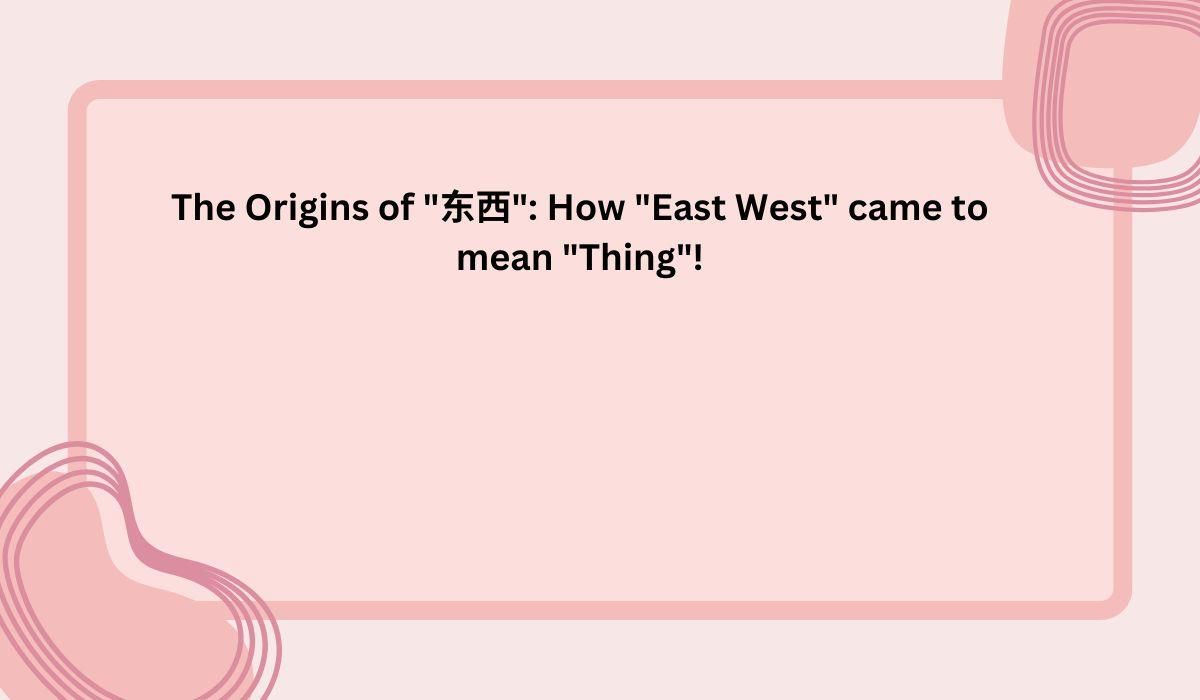
If you learn Mandarin online, well, have you ever noted that a most common word, "thing", you always use, actually is made up of "East" and "West"? This semantic evolution has to do with historical anecdotes and philosophical doctrines, including the profound influence of the Five Elements (五行, Wǔxíng) theory. An online Chinese teacher may include such explanations into their classes.
Historical Anecdotes: Markets of the East and West
A prevalent legend traces the term "东西" back to the bustling marketplaces of ancient China. During the Tang Dynasty, the capital city, Chang'an, was home to two prominent markets: the Eastern Market (东市) and the Western Market (西市). Merchants and commoners frequented these hubs to procure a myriad of goods. Over time, the phrase "买东西" (mǎi dōngxi), meaning "to buy things," emerged, encapsulating the act of shopping in both markets. This colloquialism endured through the centuries, embedding itself in the vernacular to denote purchasing items.
Philosophical Underpinnings: The Five Elements Theory
Delving deeper, the connection between "东西" and the Five Elements offers a fascinating perspective. In traditional Chinese philosophy, the Five Elements—Wood (木), Fire (火), Earth (土), Metal (金), and Water (水)—are fundamental constituents of the universe, each associated with specific cardinal directions:
According to this theory, the East symbolizes Wood, representing growth and vitality, while the West embodies Metal, signifying strength and utility. These elements were considered tangible and tradable commodities in ancient times. Conversely, the South (Fire) and North (Water) correspond to elements that are intangible or challenging to commodify directly. Thus, when individuals set out to acquire goods, they referred to their quest as seeking "东西" (east-west), encompassing items associated with Wood and Metal—materials essential for daily life and commerce.
Cultural Resonance and Linguistic Evolution
The term "东西" exemplifies the symbiotic relationship between language and culture. Its evolution from directional indicators to a general noun for "things" reflects societal practices, philosophical beliefs, and the pragmatic aspects of trade in ancient China. For learners delving into Mandarin, understanding such etymological roots enriches the language acquisition process, offering insights into the cultural and historical contexts that shape modern expressions.
In essence, the word "东西" serves as a linguistic artifact, encapsulating the convergence of geography, commerce, and philosophy in Chinese culture. Its journey from denoting cardinal directions to representing "things" underscores the dynamic and adaptive nature of language, mirroring the evolving human experience.